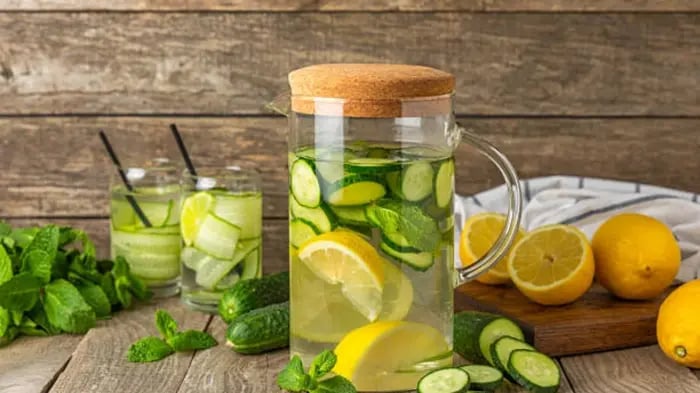- Infuse Fruits into Your Water
- Make Fruit-Infused Breakfast Pancakes
- Create Frozen Fruit Pops for Snacks
- Add Fruits to Dals and Curries
- Make Fruit-Based Chutneys and Dips
- Use Fruits as Garnish for Main Dishes
- Try Light Fruit-Based Desserts after Meals
Introduction
Every season brings a new burst of flavor, color and nutrition through its fruits. From juicy mangoes of summer to crisp apples of winter, nature gives us precisely what we need at the right time. Seasonal fruits are packed with nutrients that support immunity, energy and overall well-being. Adding them to your daily routine is good for your health and makes meals exciting and balanced.

The best part of eating fruits in season is that they are grown and harvested at their peak, which means more vitamins, better taste and less preservatives. They are also lighter on the pocket and kinder to the environment as they don’t need long-distance transport or artificial ripening. For growing kids and busy adults alike, including seasonal fruits in your diet ensures the body gets what it needs throughout the year.
There are many ways to get them on your plate, fresh in salads, blended into smoothies, added to breakfast bowls or as quick snacks. With a little creativity, every meal can be a nourishing experience that’s both refreshing and rewarding. Seasonal fruits remind us that eating right can be as simple as following nature’s rhythm.
7 Easy And Fun Ways To Add Seasonal Fruits Into Your Kids' Diet

Seasonal fruits are nature’s simplest gift, full of flavor, freshness, and nutrition that match the body’s needs through every season. They’re juicy in the summer to hydrate you, fibre-rich during monsoon to aid digestion, and vitamin-packed in winter to fight infections.
Eating fruits in season also supports local farmers and ensures you get produce that’s grown naturally, not stored for months. Whether you’re packing a school lunch, making breakfast, or preparing weekend treats, adding fruits can turn ordinary dishes into vibrant, wholesome meals.
Here are seven new and exciting ways to make seasonal fruits a natural part of your daily routine, without losing their freshness or nutrition.
Infuse Fruits into Your Water
Skip sugary drinks and make your water more exciting by infusing it with fruits. Add slices of orange or lemon to a bottle of water and let it sit for a few hours. According to ISTI, the fruits release subtle flavour and nutrients like vitamin C while keeping you hydrated all day. It’s refreshing, visually appealing, and perfect for kids who find plain water boring.
Make Fruit-Infused Breakfast Pancakes
Add grated apples or mashed bananas to your morning pancake dough. It adds a gentle sweetness and color without the need for added sugar. According to FSSAI, the fiber and vitamins from the fruits make breakfast more filling and nutrient-dense. Kids love the hint of fruit flavor, and it’s an easy way to sneak extra nutrition into a familiar meal.
Create Frozen Fruit Pops for Snacks
Instead of store-bought popsicles, blend seasonal fruits like mango or watermelon with a bit of coconut water or yogurt. Pour the mixture into molds and freeze. According to FSSAI, these pops are hydrating, low in sugar, and full of natural vitamins. Perfect for after-school snacks or hot afternoons, they make healthy eating feel like a reward.
Add Fruits to Dals and Curries
Regional Indian dishes often mix fruits and savory flavors beautifully. Try adding pineapple chunks to kadhi, apple pieces to sabzi, or pomegranate to lentil salads. The mild sweetness of fruits balances spices while enhancing the dish’s nutrient profile. According to a study published in BMC Nutr. 2025, it’s an innovative way to make traditional meals richer in vitamins, antioxidants, and fiber.
Make Fruit-Based Chutneys and Dips
Turn your fruits into quick chutneys or dips that pair beautifully with snacks or meals. Blend guava with mint and green chili, or mix mango with curd for a creamy dip. According to the Dietary Guidelines for Indians, these fruity accompaniments are full of vitamin C and natural sweetness, making them both healthy and tasty. They also encourage kids to eat fruits without even realizing it.
Use Fruits as Garnish for Main Dishes
Sprinkling fruits over meals adds freshness and visual appeal. Add pomegranate seeds to pulao, orange slices to grilled paneer, or chopped apples to khichdi. According to a study published in Front Sustain Food Syst.2022, fruits add bursts of flavor and color while offering antioxidants and fiber. It’s a small but effective way to bring seasonal nutrition into every meal without major effort.
Try Light Fruit-Based Desserts after Meals
Skip sugary sweets and try lighter desserts made from fruits. Bake pears with cinnamon, stew apples with honey, or make a quick fruit crumble using oats and jaggery. According to FSSAI, these options satisfy sweet cravings while providing vitamins, minerals, and fiber. It’s a guilt-free way to enjoy dessert that also encourages kids to appreciate fruits beyond raw form.
Conclusion

Adding seasonal fruits to your diet doesn’t have to be routine or repetitive. With a bit of imagination, they can find their way into drinks, meals, and desserts effortlessly. These small, creative changes not only enhance nutrition but also make family meals colorful and exciting. The more naturally you eat, the more your body benefits, and seasonal fruits are nature’s most delicious way to help you do that. So this year, let your plate reflect the seasons, fresh, vibrant, and full of life.
Her love for storytelling began with reading her grandfather’s speeches, where Tarishi saw the power of words in creating lasting memories. Combining her passions for food and writing, she has turned her life into a fulfilling path of sharing stories that celebrate flavours and how food brings communities together.
The views expressed are that of the expert alone.
The information provided in this content is for informational purposes only and should not be considered a substitute for professional medical advice, diagnosis, or treatment. Always seek the advice of your physician or another qualified healthcare provider before making any significant changes to your diet, exercise, or medication routines. This is a sponsored article.
References
https://fssai.gov.in/upload/EATRIGHTINDIA/English.pdf
https://pmc.ncbi.nlm.nih.gov/articles/PMC7612755/
https://www.nin.res.in/dietaryguidelines/pdfjs/locale/DGI24thJune2024fin.pdf
https://pmc.ncbi.nlm.nih.gov/articles/PMC12228395/
https://www.fssai.gov.in/upload/advisories/2022/04/624ac1be799dbDirection_Nutra_30_03_2022.pdf
https://www.indiascienceandtechnology.gov.in/home-garden/basics-nutrition
https://www.fssai.gov.in/upload/knowledge_hub/19928164b641b8a487eHealthy%20food%20for%20Defence.pdf
















